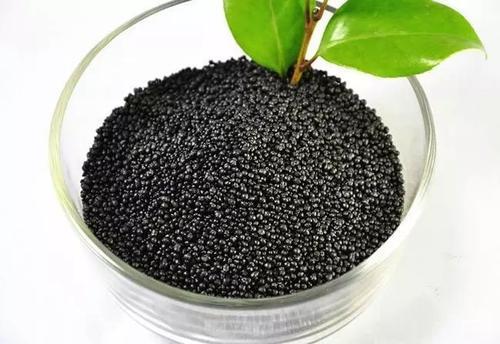
2020-07-02
Humic acid action:
1. Stimulating growth: humic acid contains physiologically active substances, which have a stimulating effect on the growth and development of crops and the physiological metabolism of the body. Inorganic fertilizers do not have such characteristics. The growth and development of rhizomes of crops has a unique driving effect, the hair is fast, the secondary roots are more, the root volume is increased, and the rhizomes are stretched, which improves the working ability of crops to digest and absorb water and nutrients.
2. Improve fertility: after the application of humic acid, its specific functional groups can fuse with nitrogen to reduce the evaporation of base fertilizer and increase fertility; it can complex or chelate with iron and aluminum to reduce phosphorus due to the production of iron phosphate and aluminum. Fix it, increase the mobile distance of phosphorus, stimulate long roots; fuse with potassium, reduce the lattice constant of potassium Fixation, increase the total number of reasonable potassium, promote the coloring of the expanded fruit, and improve the quality of the fruit. And then improve the fertilizer usage rate.
3. Improve the ability of crops to resist stress: the soil organic matter is high, which provides a high-quality living condition for beneficial microbial species. The gradual development trend of intestinal probiotics is beneficial bacteria, inhibiting the growth and development of harmful bacteria, and adding green The plant itself grows and develops robustly because of the high-quality soil type, and its disease-resistant working ability is improved, which will significantly reduce pests and diseases.
4. Improve quality: The use of humic acid can increase the sugar content of iPhone, red grapes, strawberry seedlings, etc., improve the composition of tapioca starch, protein, vitamin C, reduce the phosphate in vegetables and fruits, and the composition of sodium nitrite in fresh fruits, This improves the quality of the fruit.
5. Improve the soil layer: the organic chemical colloid solution of humic acid and the sodium ions in the soil layer are fused to produce flocculent glue, which can make the coarse-grained soil silt and fine sand, so that the water-stable soil colloid in the soil layer can be improved, and the soil layer can be improved. The water, fertilizer, air and heat conditions are sufficient to harmonize, lock water, and improve fertilizer retention, especially in the improvement of very little soil layers such as too sticky or too sand.

How to use humic acid fertilizer
1. Soaking seeds: Soaking seeds can increase the rate of seed emergence, germinate in advance, and improve the working ability of the hair of the seedlings. Generally, the concentration value of soaking seeds is 0.005-0.05 percent, and the general soaking time is 5-10 hours, rice, cotton wool, etc. Shell seeds are 2 to 4 hours.
2. Root soaking: rice, sweet potato, etc. can be soaked with sodium humate or potassium humate aqueous solution before planting, and the concentration value is 0.01-0.05 percent. After soaking, the hair is fast and the survival rate is high.
3. Spraying: the general concentration value is 0.01-0.05 percent aqueous solution, spray 2-3 times during the flowering period of crops, and the spray volume is 50 liters of solution per 1 mu. The spraying time should be taken at 2-4 o'clock in the afternoon. good.
4. Base fertilizer: solid humic acid fertilizer (such as ammonium humate, etc.), generally 100-150Kg per 6 mu. When humic acid aqueous solution is used as base fertilizer, the concentration value is 0.05-0.1%, and the amount used per 6 mu is 250-400 Liter solution, can be mixed with farmyard fertilizers, can be applied in furrows or holes.
5. Fertilization: Before the seedling stage and heading stage of crops, use 250 liters of solution with a concentration of 0.01-0.1 percent per 6 mu to irrigate around the roots and stems of crops. Rice fields can be used with water injection or sprinkled on the river surface, which can improve Seedlings, flourishing seedlings, promoting growth and development and other effects.